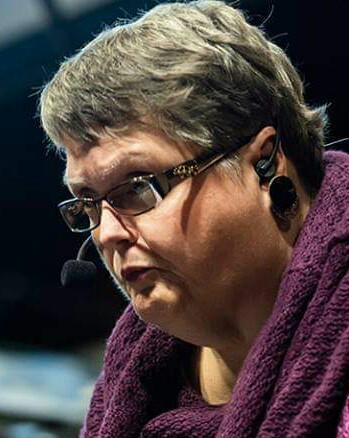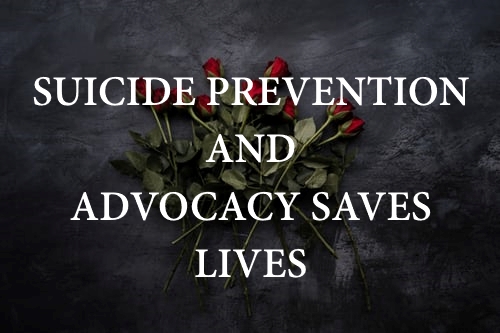Although it may seem CPTSD Foundation has been focused on the morbid subject of suicide, remaining silent helps people to die. So, in September, National Suicide Awareness Month, we have concentrated on how loved ones, caregivers, and friends of those experiencing suicidal ideation or have attempted to die by suicide can advocate for themselves to protect their mental health.
This article will speak more on different types of suicide and how you can take care of yourself as an advocate.
Dedicated to all those who have died by suicide and all who still suffer.
Facts About Suicide

Every eleven minutes, someone dies by suicide in the United States. Suicide, pre-COVID, was the tenth leading cause of death in the U.S. and the second leading cause of death of people ages 10-34, the fourth leading cause of death among those aged 34-54, and the fifth leading cause of death of people 45-54.
No one is safe from the effects of suicide as those left behind and those who survive to live forever in regret and sorrow for what happened. Suicide is no joke, and it is appalling that it is not something that we actively hold rallies about.
Typically when there is a death in a family, the community springs in to provide food for a few days to ease their sorrow, but suicide is different. Society would rather keep suicide a secret and ignore the pain that it brings.
Until we bring suicide out of the closet where it is hiding, waiting for its next victim, it will continue to plague society.
Passive Suicide
Many people have never heard the term passive suicide; however, it too kills. Passive suicide is an ardent wish to die during one’s sleep or in an accident. The person suffering from passive suicidal thought often cannot rouse themselves from bed for days and doesn’t eat, take their medications, eat, or generally take care of their health and bodies.
Passive suicide is a wish not to live while pretending to the family, friends, and the public that nothing is going on and they are alright. One of the most significant problems with passive suicide is that although it may be slow, it can turn suddenly lethal with the person actively seeking out a means to die.
Family and friends must know that the behaviors these folks are exhibiting are not only frustrating but also dangerous as they are precursors of the decision to die by suicide.
Those affected by passive suicide often live with severe depression and low self-esteem that is made worse when those they love or know begin accusing them of being lazy and no good. Family members may become frustrated that their loved one isn’t motivated enough to get up off the couch or out of bed and weep or space out when confronted. Sometimes families and friends resort to name-calling and angry threats.
When family members convince their loved one to get help, the passively suicidal person obliges only for peace from their family not to tell the therapist that they are suicidal. Unfortunately, many therapists are not trained to recognize and treat passive suicide and may miss the signs altogether. One article states that 77% of people who die by suicide had visited a therapist or doctor within a year, and 45% had seen them within a month of their death.
If an advocate for a passively suicidal family member or friend, it is vital that you do not allow yourself to become obsessed with their behavior. Gently encourage them to take care of themselves, but never fall into the trap of allowing their behavior to become all-consuming to your own life. Keep in mind that there is nothing anyone can do to force another adult to do anything, so just be there for them and remind them often that you love and care for them.
Men and Suicide

The United States Centers for Disease Control (CDC) in April 2020 released some very disturbing statistics about men and suicide. Suicide ranks number four in leading causes of death in men 35-54 and ranks second among boys and men 10-34. These numbers have only gotten worse under the pandemic as many farmers and others affected by COVID-19 find themselves struggling financially.
To further add to the grim statistics about men and suicide, according to the CDC, in 2017, nearly half of all male deaths were caused by suicide, a rate that is 3.5 greater than for women and men over the age of 65 have the most significant risk for suicide. Middle-aged white men ranked at 70% of all completed suicides in 2017.
There are red flags and risk factors that point to a man or boy having suicidal ideations:
- Living alone
- Social isolation
- Using drugs or other substances to cope
- Lack of meaningful relationships
- A history of childhood abuse of any type
- A divorce or relationship break up
- Unemployment
- Being bullied
- Imprisonment
- Loss of a loved one
In older men, add the following to your list of risk factors to watch for:
- Older men experiencing depression
- Older men experiencing pain or illness
- Men of an older age experiencing feelings of hopelessness and guilt
- Older men living alone
The list of occupations these men fulfill who rank highest among suicide rates may surprise you.
- Medical doctors
- Dentists
- Police officers
- Veterinarians
- Financial services
- Real estate agents
- Electricians
- Lawyers
- Farmers
- Pharmacists
- Truck drivers
Shocked? Society doesn’t view men in these positions or any job for that matter as being at risk for dying by suicide, but it happens. If you advocate for someone in one of these positions or any man for that matter, again, just being there for them and allowing them to know you see their pain can help prevent a tragedy.
Advocating as a Nation

Suicide isn’t only a family tragedy; it is a complex public health problem that requires cooperation among individuals, family members, treatment facilities, and health care providers. Suicide is a preventable cause of death, but it will take all of us to work together to stop it.
The first thing that must happen is that advocates like us must make the public aware of this public health tragedy and get support for the people who need it. This help needs to be given to those who live with suicidal ideation and those who love and are friends with them.
The first task for advocates and society is to learn the warning signs of suicide and remember that there are no harbingers of trouble sometimes. These signs include the following:
- Talking about wanting to die or wishing they would die
- Talking about killing themselves
- Actively seeking out a method to die by suicide
- Talking about feeling hopeless or having no purpose
- Talking about feeling trapped
- Being in unbearable pain
- Talking about how they feel they are a burden on others
- Increased use of alcohol or drugs
- Having anxious, agitated, or reckless behaviors
- Sleeping too little or too much
- Withdrawing from family, friends, and things they once enjoyed
- Talk about seeking revenge on someone
- Showing rage
- Displaying extreme mood swings
Knowing what to do if someone you know is exhibiting warning signs of suicide is vital to both you and them. It is critical to take good care of yourself during these times and remember you are limited in what you can do. However, what you can do is to call 911 if you see or hear the following:
- Someone threatening to hurt or kill themselves, especially if the person has a weapon
- Someone is actively searching for a lethal means to attempt to die by suicide in their moment of despair
- Someone is talking, posting on social media, or writing about death and suicide
Advocating for Yourself

We have covered some very hard to hear subjects this month, talking about dying by suicide and the scars it leaves on the hearts of those left behind. However, the only way to defeat the enemy is to know its existence and band together as advocates for those who suffer.
Some people are going to die by suicide no matter what we do. This is a fact that is painful but true. But we can help them by helping ourselves remain healthy. We are no good to our loved ones who are suicidal if we are sick or weakened by illness.
Hopefully, you have come away from this series understanding suicidal behavior but also understanding that you are a vital part of the mission society must take on to end this scourge on our society.
This article is the last in this series, but we hope not the end of advocacy for yourself and those you love. Remember, every life is precious, including yours.

“You are responsible to yourself, to love yourself, to care for yourself, and to help yourself.”
―
“Don’t just seek out help when you are suffering. Every day is a good day to learn, grow, and help yourself. Every day is a good day to invest in bettering the quality of your life.”
―

If you or a loved one live in the despair and isolation that comes with complex post-traumatic stress disorder, please, come to us for help. CPTSD Foundation offers a wide range of services, including:
- Daily Calls
- The Healing Book Club
- Support Groups
- Our Blog
- The Trauma-Informed Newsletter
- Daily Encouragement Texts
All our services are reasonably priced, and some are even free. So, to gain more insight into how complex post-traumatic stress disorder is altering your life and how you can overcome it, sign-up; we will be glad to help you. If you cannot afford to pay, go to www.cptsdfoundation.org/scholarship to apply for aid. We only wish to serve you.

My name is Shirley Davis and I am a freelance writer with over 40-years- experience writing short stories and poetry. Living as I do among the corn and bean fields of Illinois (USA), working from home using the Internet has become the best way to communicate with the world. My interests are wide and varied. I love any kind of science and read several research papers per week to satisfy my curiosity. I have earned an Associate Degree in Psychology and enjoy writing books on the subjects that most interest me.




